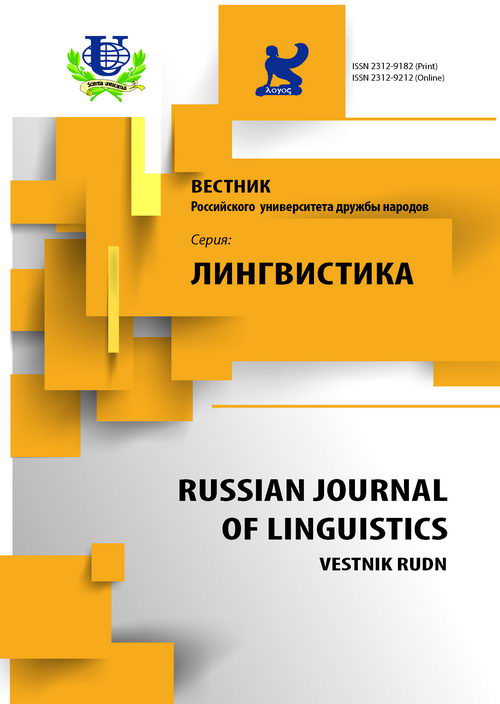Mixed Emotion and Its Functional and Semantic Potential (Exemplified with the Word Dislike)
- Authors: Shteba AA1
-
Affiliations:
- Volgograd State Socio-Pedagogical University
- Issue: No 1 (2015)
- Pages: 72-80
- Section: Articles
- URL: https://journals.rudn.ru/linguistics/article/view/9404
Cite item
Full Text
Abstract
The article touches upon the problem of language categorization of mixed emotions from the perspective of functional and semantic aspects. Using the word dislike as an example the author shows how the reflection process of polyvalency in any emotional experience is revealed in the language: from implicit emotive ambivalence to its explicitness. It is postulated that the seme “mixture” is inherent to any word that has “emotion” and “valency” semes as their semantic components. The above-mentioned thesis is revealed from the combined and separate spelling of the Russian particle “НЕ” with verbs and nouns that are used to describe the process of mixed emotion categorization. It is also proved that pragmatic potential of expressing mixed emotions in emotional situations includes the speaker’s target at his\her interlocutor, anticipation of emotional reaction, and maintenance of a constructive communication tonality. The article demonstrates that categorization of mixed emotions presents a new stage in verbal emotion objectification and is the evolution marker of human emotional intelligence.
Keywords
About the authors
A A Shteba
Volgograd State Socio-Pedagogical University
Email: alexchteba@yandex.ru
Romance Philology Chair
References
- Апресян Ю.Д. Избранные труды, том I. Лексическая семантика: 2-е изд., испр. и доп. М.: Школа «Языки русской культуры», Издательская фирма «Восточная литература» РАН, 1995.
- Гиренок Ф.И. Метафизика пата (косноязычие усталого человека). М.: Академический проект, 2014.
- Говердовский В.И. Коннотемная структура слова. Харьков: изд-во «Выща школа», 1989.
- Карманова З.Я. Феноменология слова: слово vs мысль. Монография. М.: ТЕЗАУРУС, 2010.
- Кольцова Л.М. Прагматика художественного текста в зеркале русской пунктуации // Вестник ВГУ. Сер. Гуманитарные науки. 2003. № 1. С. 284-298.
- Кротов Я. Революция пробела. XI век: революция в пении, революция в чтении. URL: http://krotov.info/yakov/history/11_moi/revoluzia_probela.htm.
- Мельчук И.В. К понятию словообразования // Известия Академии наук СССР, сер. литературы и языка. 1967. Вып. 4. С. 352-362.
- Новиков Л.А. Что стоит за слитным написание не- с глаголами у А.А. Потебни. Об одной особенности орфографии ученого // Новиков Л.А. Избранные труды. Том II. Эстетические аспекты языка. Miscellanea. М.: Изд-во РУДН, 2001. С. 642-652.
- Шаховский В.И. Категоризация эмоций в лексико-семантической системе языка. Изд. 2-е, испр. и доп. М.: Издв-во ЛКИ, 2008.
- Эпштейн М.Н. Отрицание как утверждение. Интегральная модель написания «не» с глаголами и другими частями речи // Культура письменной речи. URL: http://www.gramma.ru/ RUS/?id=1.90.

















